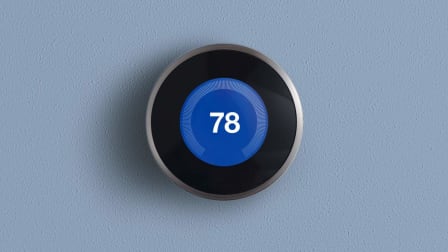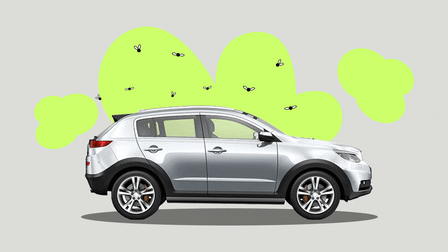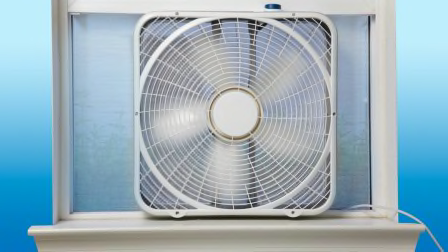8 Air Conditioner Problems and How to Fix Them
Experts tell us the top reasons your unit isn't keeping you cool
When you shop through retailer links on our site, we may earn affiliate commissions. 100% of the fees we collect are used to support our nonprofit mission. Learn more.

Like any appliance, air conditioners need a little TLC to deliver optimal performance. ACs that haven’t been kept in top-notch condition tend to struggle most.
We asked air conditioner pros and Consumer Reports test engineers to identify the most common problems that crop up with air conditioners. They highlighted eight to troubleshoot. As it turns out, the No. 1 problem affects both window units and central AC systems, and—we’re happy to report—it’s the easiest to fix. If your air conditioners aren’t cooling properly after that first fix, we also have separate troubleshooting checklists for window and central air conditioners.
If you’re looking to replace your air conditioner, you’ll find our list of top window air conditioners for small, medium, and large rooms.
- The Most Common AC Problem
- Troubleshooting Checklist: Window ACs Central ACs
- Best Window Air Conditioners
The Most Common AC Problem
1. The filter is dirty. No matter which type of air conditioner you have, a clogged air filter restricts airflow, decreasing efficiency and reducing the unit’s ability to cool the air effectively. If you haven’t cleaned the filter in your window or portable air conditioner recently, make sure you do and then check it periodically. For central AC systems, check the filter manufacturer’s recommendation for when to swap in a new one. In CR’s tests, HVAC (heating, ventilation, and air conditioning) filters last three to 12 months.
Just keep in mind that if your central air system is running constantly or if you have pets, you’ll need to change your filters more often. “When we get calls about central air units that aren’t working well, nine times out of 10 it’s because of a dirty filter,” says Stewart Unsdorfer, the founder of Wilson Heating & Air Conditioning in Cleveland.
Window AC Troubleshooting Checklist
2. It’s too sunny inside. If your AC is in a window that gets direct sunlight in the heat of the day, it will have to work harder to cool your space. If you have a choice, move it to a shadier spot. If you don’t, keep your shades and curtains drawn during the day to block the sun and prevent it from heating up your house.
Central AC Troubleshooting Checklist
5. The thermostat isn’t on the right setting. With a smart or programmable thermostat, you can control the temperature in your home more easily so that it’s comfortable when you’re there and a bit warmer when you’re not. If the temperature seems off, make sure the thermostat isn’t exposed to direct sunlight, which may cause it to register the wrong temperature.
6. The registers are dirty or blocked. If you have a forced-air heating and cooling system, regularly vacuum the registers to remove any dust buildup. Make sure that furniture and other objects aren’t blocking the airflow through your registers.
7. Plants are crowding the compressor. The outdoor compressor for central air needs adequate airflow to work correctly, so make sure there’s at least 2 to 3 feet of space between it and any plants or structures. There should also be 5 feet of clearance between the top of the unit and any trees above.
8. You forgot to schedule an annual checkup. An inspection by an HVAC technician can catch any serious problems before they get worse and leave you hot and bothered. The technician will check all the moving parts as well as the refrigerant, and recharge the system if necessary.
Best Window Air Conditioners
If your room air conditioner is beyond repair, you can find one that did well in our tests for a little over $200 for a small unit and from about $450 and up for a bigger one. Make sure you match the size of the air conditioner to the room it’s meant to cool. Below, we list models in each size that performed well in CR’s tests. You can find even more in our full air conditioner ratings.
ACs for Small Rooms (100 to 250 Square Feet)
For a small bedroom, home office, or guest room, look for an air conditioner with a capacity of 5,000 to 6,500 Btu. You’ll want one with good scores for comfort and noise. Here are three top picks to consider.
ACs for Midsized Rooms (250 to 350 Square Feet)
To cool a bigger or busier room, you’ll want to step up to a midsized air conditioner rated 7,000 to 8,500 Btu. If it’s for a bedroom, heed our noise scores. Here are three top picks.
ACs for Large Rooms (350 to 550 Square Feet)
For a living room or family room, you’ll want a large air conditioner, 9,800 to 12,500 Btu, especially if you have an open floor plan. Here are three good choices.
































